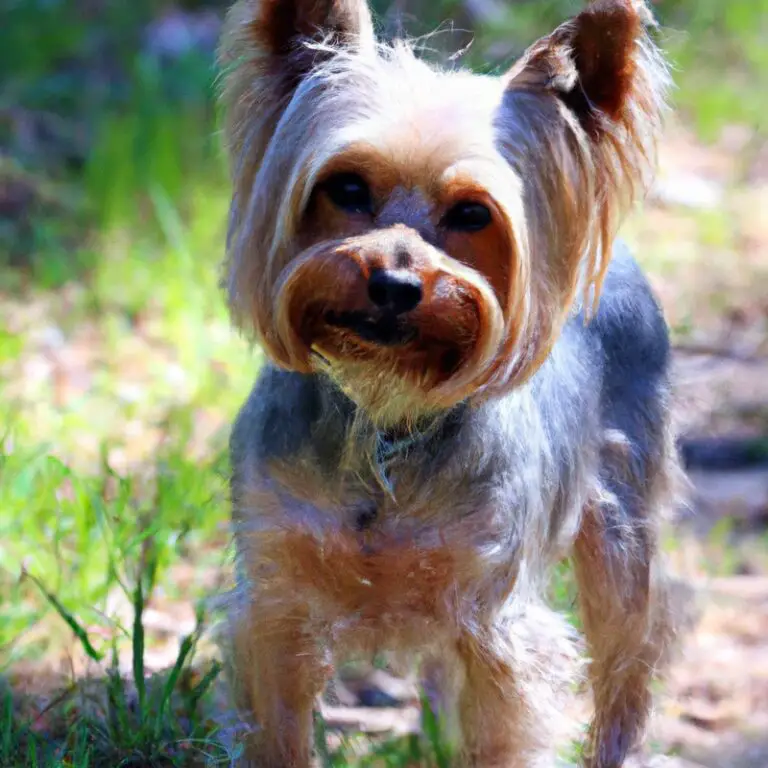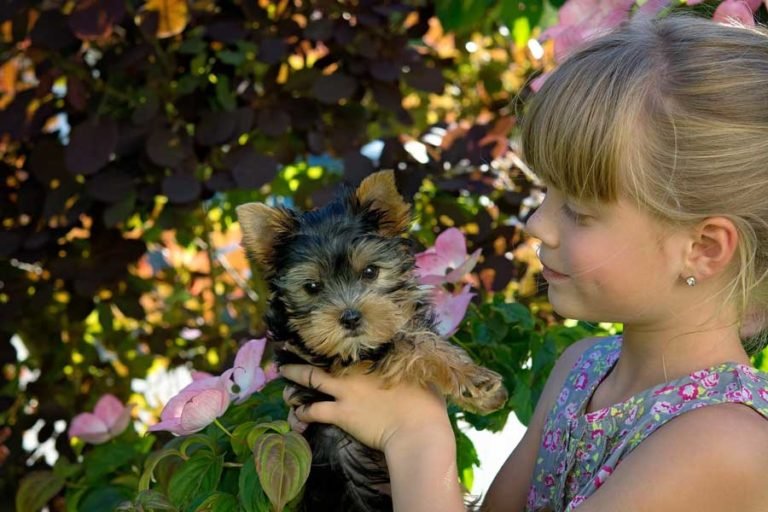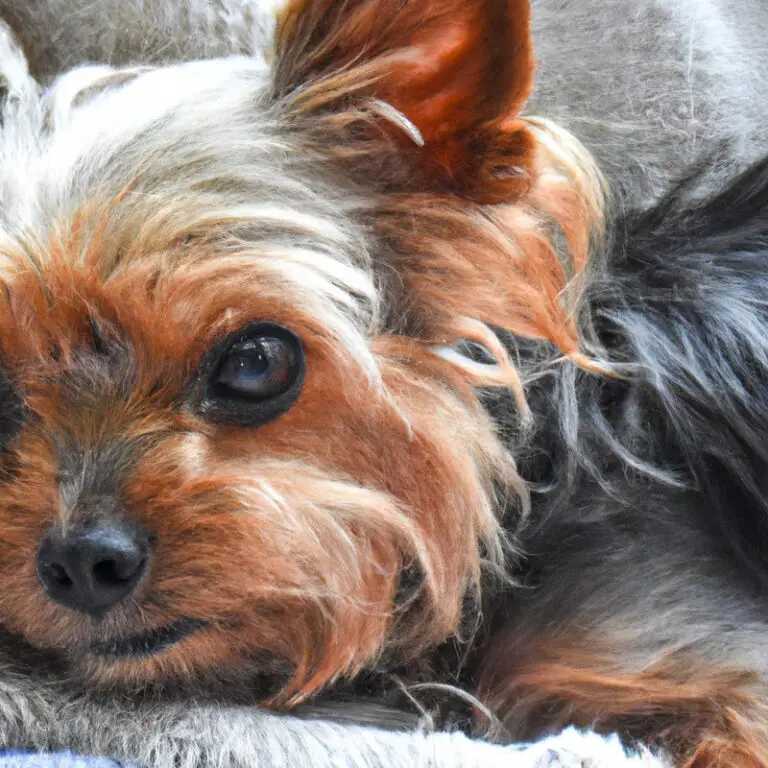What Are The Best Training Methods For Yorkshire Terriers?
Key Takeaways:
- Positive reinforcement is the most effective training method for Yorkshire Terriers.
- Consistency and repetition are key in training Yorkshire Terriers.
- Reward-based training yields better results than punishment-based methods.
- Early socialization is important for the overall training success of Yorkshire Terriers.
Welcome! Are you a proud Yorkshire Terrier owner looking for the best training methods to help your furry friend become a well-behaved companion? Well, look no further! As an expert in dog training, I am here to guide you through the most effective techniques to train your Yorkshire Terrier.
Understanding their behavior and using positive reinforcement are key to success.
From clicker training to crate training, leash training to socialization techniques, we’ll cover it all. Plus, I’ll provide tips on overcoming common challenges and even discuss the benefits of hiring a professional trainer.
Get ready to unleash the potential of your Yorkshire Terrier!
| Training Method | Description |
| Positive Reinforcement | Using rewards such as treats, praise, and play to encourage desired behaviors and ignore unwanted behaviors. |
| Clicker Training | Using a clicker device to signal correct behavior, followed by a reward. The clicker helps to mark the precise moment the desired behavior occurs. |
| Leash Training | Teaching Yorkshire Terriers to walk politely on a leash using techniques like loose leash walking and stopping when pulling occurs. |
| House Training | Teaching Yorkshire Terriers where to eliminate by creating a routine, using positive reinforcement, and consistently supervising and rewarding appropriate elimination behaviors. |
| Socialization Training | Exposing Yorkshire Terriers to a variety of people, animals, environments, and stimuli to ensure they become well-rounded and confident. |
| Obedience Training | Teaching Yorkshire Terriers basic commands such as sit, stay, come, and down. This helps establish a foundation of good behavior and promotes safety. |
| Agility Training | Engaging Yorkshire Terriers in obstacle courses and activities that enhance their physical fitness, mental stimulation, and bond with their owners. |
Basics of Training Yorkshire Terriers
Understanding Yorkshire Terrier Behavior
Understanding Yorkshire Terrier behavior is key to successful training. Yorkies are known for their energetic and feisty nature.
They are often confident and independent, but can also be stubborn at times.
It’s important to establish yourself as the leader and set clear boundaries from the beginning. Yorkies are highly intelligent, so mental stimulation is crucial.
Positive reinforcement techniques, like using treats and praise, work best.
Consistency and patience are also essential when training a Yorkie. Understanding their behavior will help you connect and build a strong bond with your furry friend.
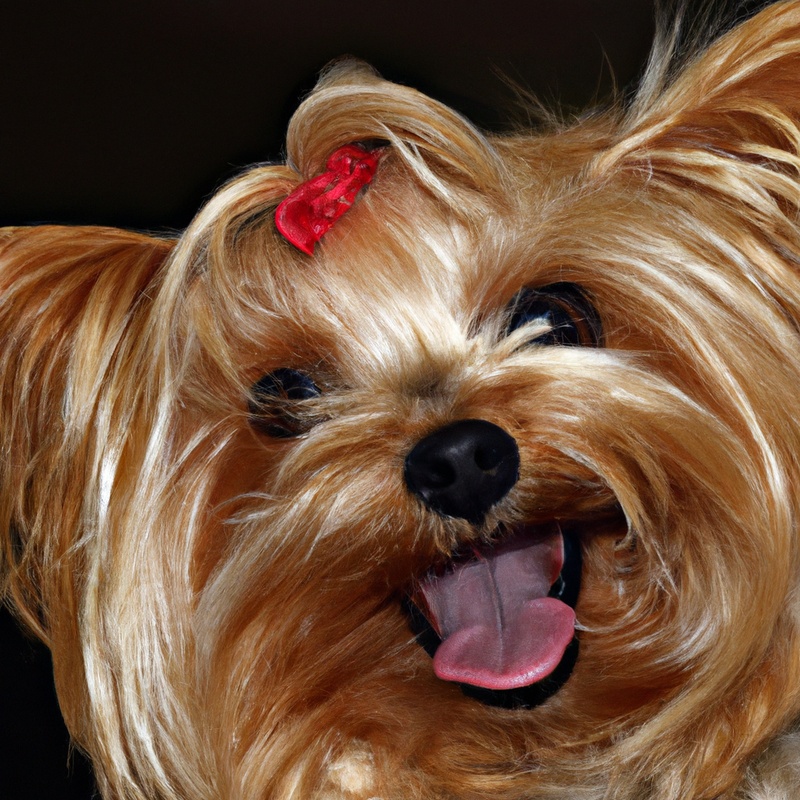
Importance of Positive Reinforcement
Positive reinforcement is vital in training Yorkshire Terriers. It involves rewarding good behavior to encourage them to repeat it.
This method has several benefits.
It enhances the bond between you and your Yorkie, making training sessions enjoyable for both of you. Positive reinforcement also boosts their confidence and builds a positive association with training.
It’s important to be consistent and use rewards that your Yorkie finds motivating, such as treats, praise, or playtime.
This approach helps create well-behaved and happy Yorkshire Terriers.

Popular Training Methods for Yorkshire Terriers
Clicker Training for Yorkshire Terriers
Clicker training is a popular and effective method for training Yorkshire Terriers. It involves using a small handheld device that produces a clicking sound when pressed.
The idea is to associate the click with a reward, such as a treat or praise.
Here’s how it works:
- Start by getting your Yorkshire Terrier familiar with the clicker. Press the clicker and immediately reward them with a treat, so they understand that the sound means something good.
- Once they understand the connection between the click and the reward, you can begin using the clicker to teach them specific commands or behaviors. For example, if you want them to sit, wait for them to sit naturally, click the clicker, and then give them a treat.
- Consistency is key. Make sure to click at the exact moment your Yorkshire Terrier performs the desired behavior, and always follow it up with a reward. This helps reinforce the behavior and strengthens the association between the click and the reward.
- Be patient and keep training sessions short. Yorkshire Terriers have a short attention span, so it’s important to keep the training sessions fun and engaging. Aim for multiple short sessions throughout the day rather than one long session.
- Gradually phase out the clicker and rely more on verbal cues and rewards. Once your Yorkshire Terrier understands the commands or behaviors you’re teaching them, you can start to rely less on the clicker and more on verbal cues. However, it’s still important to reward them consistently for good behavior.
Remember, clicker training is a positive reinforcement technique that focuses on rewarding desired behaviors rather than punishing unwanted ones. It’s a gentle and effective way to train Yorkshire Terriers and build a strong bond with them.
So grab a clicker, some treats, and get started on training your Yorkie!
Crate Training Tips for Yorkshire Terriers
Here are some crate training tips for Yorkshire Terriers:
- Choose an appropriate crate size: Make sure the crate is not too large or too small for your Yorkshire Terrier. It should be just big enough for them to stand up, turn around, and lie down comfortably.
- Introduce the crate gradually: Start by placing the crate in a familiar and quiet area of your home. Leave the door open and let your Yorkie explore it freely. Place treats and toys inside to make it more enticing.
- Make it cozy and inviting: Use comfortable bedding inside the crate to make it a pleasant space for your Yorkie. You can also drape a blanket over the crate to create a den-like atmosphere.
- Use positive reinforcement: Whenever your Yorkie voluntarily enters the crate or shows interest in it, reward them with praise, treats, or playtime. This will help them associate the crate with positive experiences.
- Start with short durations: Begin by closing the crate door for short periods while you are still in the room. Gradually increase the duration of crate time as your Yorkie becomes more comfortable and relaxed.
- Stick to a consistent routine: Establish a regular schedule for crate training, including designated times for meals, potty breaks, exercise, and crate time. Consistency and routine will help your Yorkie understand expectations.
- Never use the crate for punishment: The crate should always be a safe and positive place for your Yorkie. Avoid using it as a form of punishment, as this can create anxiety and negative associations.
- Gradually increase separation time: Once your Yorkie is comfortable being crated while you are in the room, start leaving them alone for short periods. This will help them learn to be calm and confident when you’re not around.
Remember, every dog is different, and crate training requires patience and consistency. With time and positive reinforcement, your Yorkshire Terrier can become comfortable and content in their crate.
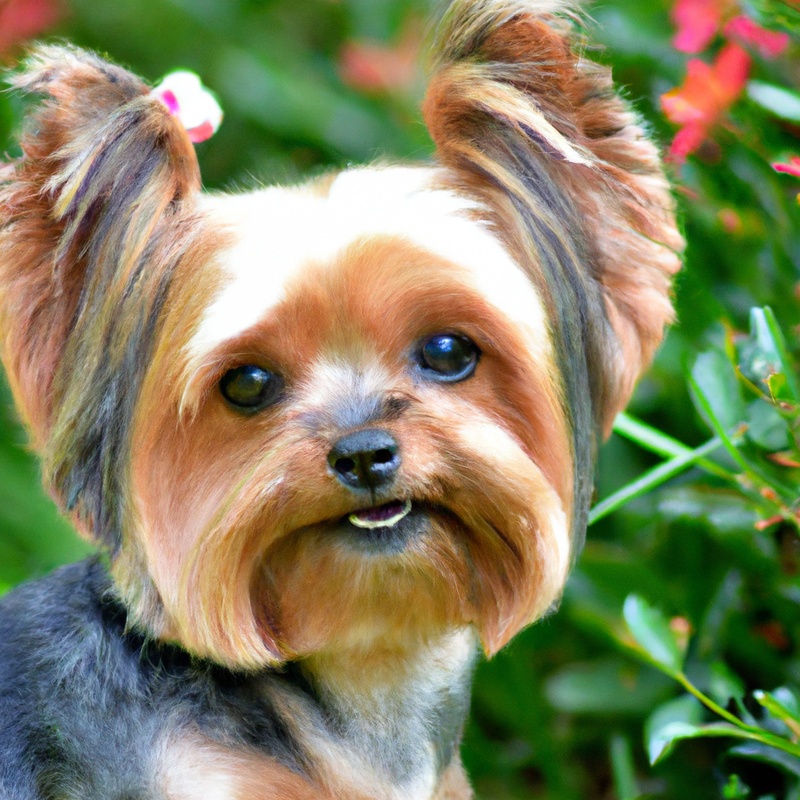
Leash Training Yorkshire Terriers
Leash training Yorkshire Terriers is an important part of their overall training. Start by introducing your Yorkie to the leash gradually, allowing them to get used to the feeling of wearing it.
Use positive reinforcement techniques, such as treats and praise, to reward them for walking calmly on the leash.
Practice short, frequent training sessions to gradually increase their confidence and comfort level. Avoid pulling or tugging on the leash, as this can create resistance and make the training process more difficult.
It’s also important to choose the right leash and collar that are appropriate for your Yorkie’s size and breed.
With patience and consistency, your Yorkshire Terrier can become a well-behaved and happy walking companion.
Socialization Techniques for Yorkshire Terriers
Introducing Yorkshire Terriers to Other Dogs
When introducing your Yorkshire Terrier to other dogs, it’s important to take things slow. Start by choosing a neutral location where both dogs can feel comfortable.
Keep the initial interaction short and positive, allowing them to sniff each other and observe body language.
Watch for signs of stress or aggression and step in if needed. Gradually increase the time spent together, always monitoring their behavior.
Remember to reward your Yorkshire Terrier for calm and friendly interactions, and never force the introduction if your dog seems fearful or uncomfortable.
Exposing Yorkshire Terriers to Different Environments
Exposing Yorkshire Terriers to different environments is important for their socialization and overall well-being. It helps them become more adaptable and comfortable in various situations.
Taking them for walks in different neighborhoods, parks, or even busy city streets exposes them to different sounds, smells, and people.
This exposure can help them become more confident and less fearful in new environments. Visiting friends and family, or allowing them to interact with other pets, can also provide valuable socialization opportunities.
Gradually exposing them to different environments and situations will help them become well-rounded and happy companions.
Familiarizing Yorkshire Terriers with Various People
Familiarizing Yorkshire Terriers with various people is essential for their socialization. Here’s how you can do it:
- Start with close family members and friends: Introduce your Yorkie to the people they see regularly, allowing them to become comfortable with their presence.
- Gradually introduce new faces: Slowly expose your Yorkie to new people, ensuring a positive and calm environment. Avoid overwhelming situations and let your dog approach new people at their own pace.
- Use positive reinforcement: Reward your Yorkie with treats or praise when they show calm and friendly behavior towards new people. This will help them associate meeting new individuals with positive experiences.
- Take them on outings: Bring your Yorkie to different places, such as parks or pet-friendly events, where they can interact with different people. This will expose them to various personalities and behaviors.
- Enlist the help of others: Ask friends, neighbors, or professional trainers to interact and engage with your Yorkie. This will expose your dog to different personalities and ensure they become comfortable with a range of people.
Remember, creating positive experiences and allowing your Yorkie to socialize at their own pace is key. With consistent and patient efforts, your Yorkshire Terrier will become comfortable around all kinds of people.
Special Considerations for Training Yorkshire Terriers
House Training Yorkshire Terriers
House training Yorkshire Terriers can be challenging, but with patience and consistency, it can be accomplished successfully. Start by establishing a routine for your Yorkshire Terrier, providing regular potty breaks and meals at the same times each day.
Use positive reinforcement techniques, such as treats and praise, to reward your Yorkie when they go to the bathroom outside.
Supervise them closely inside the house and crate train them when you’re unable to keep an eye on them. Accidents will happen, but avoid punishment, as it may confuse and scare your Yorkie.
Stick to the routine, be consistent, and your Yorkshire Terrier will learn to potty outside.
Dealing with Yorkshire Terrier Barking Issues
Yorkshire Terriers are known for their lively and spirited nature, but sometimes their barking can become a bit excessive. If you’re dealing with barking issues with your Yorkie, there are a few effective strategies you can try.
- Provide plenty of exercise and mental stimulation to keep your Yorkie’s energy levels in check. A tired dog is less likely to bark unnecessarily.
- Teach your Yorkie a “quiet” command, and reward them when they stop barking on command. Consistency is key here.
- Address any underlying causes of barking, such as boredom, fear, or separation anxiety. Understanding the root cause can help you find better solutions.
- Consider using positive reinforcement training methods rather than punishment. Reward good behavior instead of focusing solely on correcting bad behavior.
- Use white noise or soothing background sounds to minimize triggers for barking, such as passing cars or strangers outside.
- Seek professional help if the barking issues persist or escalate. A dog trainer or behaviorist can provide personalized guidance and support.
Remember, every dog is unique, and what works for one Yorkie may not work for another. Be patient and consistent in your training efforts, and you’ll likely see improvement over time.
Teaching Yorkshire Terriers Not to Bite
Teaching Yorkshire Terriers not to bite can be challenging but not impossible. The key is consistency and positive reinforcement.
When your Yorkie puppy starts to nip or bite, immediately redirect their attention to a chew toy or a bone.
Be consistent in doing this every time they attempt to bite. This teaches them that biting is not acceptable behavior.
Additionally, provide plenty of exercise and mental stimulation to keep them occupied and reduce the likelihood of biting out of boredom.
Patience and consistency are important when training Yorkies, so keep at it and you’ll see progress!
Training Yorkshire Terriers for Specific Activities
Teaching Yorkshire Terriers Tricks and Commands
Teaching Yorkshire Terriers tricks and commands can be a fun and rewarding experience. The key is to keep the training sessions short and consistent, focusing on positive reinforcement.
Start with basic commands like sit, stay, and come.
Use treats and praise as rewards for good behavior. Once your Yorkie has mastered these commands, you can move on to teaching them more advanced tricks like roll over or play dead.
Remember to be patient and consistent, and always end on a positive note.
With time and practice, your Yorkie will become a well-trained and obedient companion.
Agility Training for Yorkshire Terriers
Agility training for Yorkshire Terriers is a fun and beneficial activity for both you and your furry friend. Start by setting up a small agility course in your backyard or a designated area.
Use low jumps, tunnels, and weave poles to begin with.
Focus on positive reinforcement, using treats and praise to reward your Yorkshire Terrier for successfully completing each obstacle. Keep training sessions short and enjoyable, so your dog stays engaged and motivated.
Progress gradually, increasing the difficulty of the course as your Yorkie becomes more skilled.
Ensure your dog’s safety by using proper equipment and monitoring their behavior during training. Remember, patience is key.
Consistency and regular practice will help your Yorkshire Terrier excel in agility training.
Enjoy the process and have fun bonding with your energetic and intelligent pet.
Therapy Dog Training for Yorkshire Terriers
Therapy dog training for Yorkshire Terriers involves several key elements. Firstly, socialization is crucial.
Expose your Yorkie to different environments, people, and situations to build their confidence and adaptability.
Secondly, basic obedience training is essential. Teach commands like sit, stay, and come, as well as leash manners.
Thirdly, focus on specific therapy dog skills such as gentle behavior, being comfortable around strangers, and remaining calm in various settings.
It’s also important to expose your Yorkie to different sounds, smells, and textures to acclimate them to potential therapy environments. Lastly, provide positive reinforcement and rewards to motivate and encourage your Yorkie during training sessions.
With consistency, patience, and love, your Yorkshire Terrier can become a wonderful therapy dog.
Overcoming Common Training Challenges with Yorkshire Terriers
Dealing with Yorkshire Terrier Stubbornness
Yorkshire Terriers are known for their strong-willed nature, which can sometimes lead to stubbornness during training. However, there are effective strategies to deal with this behavior.
- Be patient: Stubbornness requires patience and consistency. Avoid getting frustrated and stay calm throughout the training process.
- Positive reinforcement: Use rewards and praise to motivate your Yorkshire Terrier. Treats, toys, and verbal praise can go a long way in encouraging them to cooperate.
- Break it down: Instead of overwhelming your dog with complex commands, break the training process into small, manageable steps. This makes it easier for them to understand and comply.
- Consistency is key: Establish a routine and stick to it. Consistency helps your Yorkshire Terrier understand what is expected of them and reduces their stubborn tendencies.
- Keep training sessions short: Yorkshire Terriers have short attention spans, so keep training sessions brief and engaging. This helps prevent boredom and increases their focus.
- Use redirection: If your Yorkshire Terrier is being stubborn, try redirecting their attention to a different behavior or command. This can help break their stubborn streak and refocus their energy.
- Seek professional help: If you’re struggling to deal with stubbornness, consider seeking guidance from a professional dog trainer. They can provide valuable insights and techniques specific to Yorkshire Terriers.
Remember, every dog is unique, and it may take time to see progress. Stay consistent, be patient, and your Yorkshire Terrier will eventually respond positively to training.
Addressing Yorkshire Terrier Separation Anxiety
Yorkshire Terriers are known for their loyalty and strong attachment to their owners. However, this can lead to separation anxiety when they are left alone.
To address Yorkshire Terrier separation anxiety, it’s important to understand the root of the problem.
One effective approach is gradual desensitization. Start by leaving your Yorkshire Terrier alone for short periods of time and gradually increase the duration.
This helps them get used to being alone and reduces their anxiety.
Creating a comfortable environment is also key. Provide them with a designated space, such as a cozy crate or a designated room, filled with their favorite toys and a comfortable bed.
This helps them feel safe and secure.
Establishing a consistent routine can help alleviate separation anxiety. Stick to a schedule for feeding, walks, playtime, and alone time.
This predictability can provide your Yorkshire Terrier with a sense of security.
Another helpful technique is to provide mental stimulation. Use puzzle toys, treat-dispensing toys, or interactive games to keep your Yorkshire Terrier occupied and engaged.
This can distract them from their anxiety and help them associate being alone with positive experiences.
Finally, remember to never punish your Yorkshire Terrier for displaying separation anxiety. Punishment can exacerbate their anxiety and worsen the problem.
Instead, offer positive reinforcement and rewards for calm behavior when left alone.
Addressing Yorkshire Terrier separation anxiety requires patience, consistency, and understanding. With time and proper training, you can help your furry friend feel more comfortable and secure when you’re not around.
Preventing Yorkshire Terrier Resource Guarding
To prevent Yorkshire Terrier resource guarding, it’s important to start training early. Introduce them to positive experiences while you handle their food, toys, and other belongings.
Gradually teach them to let you take things away without any fuss.
Use reward-based training methods, such as treats or praise, to reinforce desired behaviors. Avoid punishment or aggressive techniques, as they can worsen resource guarding behavior.
Consistency and patience are key; work on obedience training and reinforce the idea that you are in control of their resources.
Keep up with regular training sessions to maintain good habits.
Hiring Professional Trainers for Yorkshire Terriers
Benefits of Professional Dog Training for Yorkshire Terriers
Professional dog training for Yorkshire Terriers offers several benefits. Firstly, it ensures that your Yorkshire Terrier learns and follows commands effectively.
This is crucial for their safety and the safety of others.
Secondly, training helps in socializing your Yorkshire Terrier with people and other animals, reducing any aggressive or fearful behavior. Proper training also helps in preventing unwanted behaviors like excessive barking, chewing, or digging.
In addition, professional trainers can offer guidance on specific issues like separation anxiety or leash pulling.
With professional training, you can strengthen the bond between you and your Yorkshire Terrier and create a happier and well-behaved pet.
Choosing the Right Trainer for Yorkshire Terriers
Choosing the right trainer for your Yorkshire Terrier is essential for effective training. Look for trainers who have experience specifically with small dog breeds and a positive training method that emphasizes rewards.
Find someone who understands the unique needs and behaviors of Yorkshire Terriers and can tailor their training approach accordingly.
It’s also important to find a trainer who can effectively communicate and build a rapport with both you and your dog. Ask for recommendations, read reviews, and interview potential trainers to ensure they’re the right fit for your furry friend.
Evaluating the Progress of Professional Training
To evaluate the progress of professional training for your Yorkshire Terrier, there are a few key things you can look for. First, observe your dog’s behavior and see if they are responding to commands and cues more consistently.
Are they showing improvement in their obedience and understanding of commands?
Another important aspect to assess is their overall demeanor and confidence. Are they more relaxed and comfortable in different situations?
Additionally, consider if their problem behaviors have decreased or been eliminated.
Are they less reactive or aggressive? And finally, take note of how well your dog is retaining what they have learned.
Can they consistently perform learned skills over time?
By carefully observing these aspects, you can assess the progress of professional training for your Yorkshire Terrier.
Tips for Consistent Training with Yorkshire Terriers
Setting Clear and Achievable Training Goals
When training your Yorkshire Terrier, it’s important to set clear and achievable goals. This helps you stay focused and gives your dog a sense of direction.
Start by identifying what specific behaviors or commands you want your Yorkshire Terrier to learn.
Break these goals down into smaller, manageable steps to make the training process easier for both of you. Be consistent and patient with your training, and remember to use positive reinforcement techniques.
Celebrate each small achievement along the way, as it will help motivate your dog to continue learning.
Establishing a Consistent Training Routine
To establish a consistent training routine for your Yorkshire Terrier, it’s important to be consistent with your training sessions. Keep your training sessions short and frequent, as this helps your Yorkie stay engaged and focused.
Additionally, choose a designated area in your home where you can conduct the training sessions.
This will help create a routine and allow your dog to associate that space with training. Finally, use positive reinforcement techniques such as treats and praise to reward good behavior.
Consistency, repetition, and positive reinforcement are key to establishing a consistent training routine for your Yorkshire Terrier.
Maintaining Ongoing Training and Reinforcement.
Maintaining ongoing training and reinforcement is essential for effective training with Yorkshire Terriers. Consistency is key.
Make sure to establish a regular training schedule and stick to it.
Keep training sessions short and focused, allowing for frequent but brief practice throughout the day. Use positive reinforcement to reward desired behaviors, such as treats, toys, or praise.
Avoid punishment or negative reinforcement, as this can be counterproductive and damage the trust between you and your Yorkshire Terrier.
Be patient and understanding, as every dog learns at their own pace. Remember to remain consistent with your commands and expectations, using the same words and gestures each time.
This helps to reinforce the desired behaviors in your Yorkie’s mind.
Consistently review previously learned commands and continue to build upon them with new challenges and exercises. This helps to strengthen their skills and maintain their understanding of the commands.
Lastly, ongoing training and reinforcement should be a positive and enjoyable experience for both you and your Yorkshire Terrier.
Make it fun by incorporating games and interactive activities into the training routine. This will keep your Yorkie engaged and motivated to continue learning.
Final Verdict
As an expert in dog training, I have shared various effective training methods for Yorkshire Terriers. By understanding their behavior, using positive reinforcement, and implementing techniques like clicker training and crate training, you can create a well-behaved and obedient Yorkshire Terrier.
Socialization is crucial, and introducing them to other dogs, different environments, and various people will help them become more confident and adaptable.
Special considerations such as house training, managing barking issues, and preventing biting should also be addressed. If you’re facing challenges, professional trainers can provide the expertise needed to overcome them.
Consistency is key, so set clear goals, establish a routine, and maintain ongoing training and reinforcement.
By following these tips, you’ll have a properly trained Yorkshire Terrier that will bring joy and companionship to your life. Trust in the reliability of the information presented and implement these practical insights to ensure successful training.


